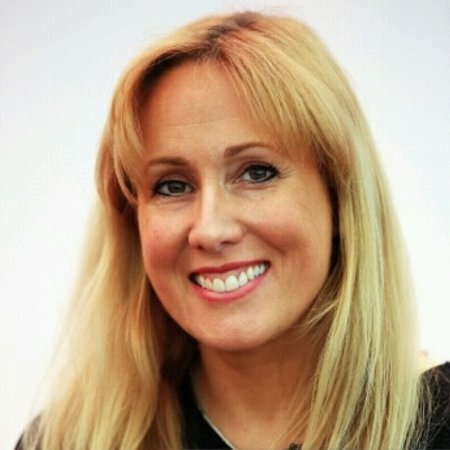Q1 IPA Bellwether Report Shows Economic Resilience: Experts Comment
by Lindsay Rowntree on 25th Apr 2017 in News

The Q1 2017 Bellwether Report, released by the IPA last week (19 April, 2017), highlights improved financial prospects and an extension to the run of marketing budget growth, to four and a half years. With a predicted rise in GDP, the Bellwether predicts a revised 0.6% growth in ad spend over the course of the year. Looking at channel performance, mobile, having only been recorded in the Bellwether Report for the last three quarters, saw a net balance of 10.3% – the highest to date. Advertising in general saw the best quarter since Q2 2014, with growth expected to be sustained. ExchangeWire ask the experts to weigh in.
Mobile plays such a varied role in brand engagement
 “The increase and strengthening of internet budget spend is, I believe, reflective of the confidence advertisers and brands have in the role of mobile to reach and resonate with their audience. We have been advocates of a mobile-first approach to digital for years, and firmly believe that mobile is more than a channel. It plays such a varied role in our engagement with brands from research, to purchase, payment, and loyalty and beyond; it is the dominant screen in our daily lives, driving growth in video, display, and search, as well as dominating consumers’ time online and driving e-commerce. Because mobile is now being utilised by more and more advertisers across the entire customer journey, and not for the final click, we are seeing ad spends that are starting to reflect the prominence of mobile in consumers’ lives’.”
“The increase and strengthening of internet budget spend is, I believe, reflective of the confidence advertisers and brands have in the role of mobile to reach and resonate with their audience. We have been advocates of a mobile-first approach to digital for years, and firmly believe that mobile is more than a channel. It plays such a varied role in our engagement with brands from research, to purchase, payment, and loyalty and beyond; it is the dominant screen in our daily lives, driving growth in video, display, and search, as well as dominating consumers’ time online and driving e-commerce. Because mobile is now being utilised by more and more advertisers across the entire customer journey, and not for the final click, we are seeing ad spends that are starting to reflect the prominence of mobile in consumers’ lives’.”
James Shepherd, EMEA Commercial Director, M&C Saatchi Mobile
Increased confidence in marketing
 “It’s pleasing to see confidence returning to the UK marketing industry with growth expected in advertising. Search and mobile dominate the headlines, but marketers with an eye on the 2.3% growth in 2020 are recognising the importance of advertising placement and the editorial environment, and how print magazine media not only provides that security but also delivers audited numbers.”
“It’s pleasing to see confidence returning to the UK marketing industry with growth expected in advertising. Search and mobile dominate the headlines, but marketers with an eye on the 2.3% growth in 2020 are recognising the importance of advertising placement and the editorial environment, and how print magazine media not only provides that security but also delivers audited numbers.”
Marcus Rich, CEO, Time Inc UK & Chairman, Magnetic
The future of TV looks positive, despite recent challenges
 “The snap election announcement will inevitably bring a further degree of uncertainty to the market. However, at Sky Media we are encouraged to see that client confidence in the effectiveness of advertising remains undiminished, as witnessed by their upbeat mood with regards to future budgets in the latest Bellwether report. The TV market has had a bumpy ride over recent months but we are heartened by the positive sentiment shared by many about the near future: a future in which TV is well placed to deliver long-term brand building benefits in a transparent and safe advertising environment.”
“The snap election announcement will inevitably bring a further degree of uncertainty to the market. However, at Sky Media we are encouraged to see that client confidence in the effectiveness of advertising remains undiminished, as witnessed by their upbeat mood with regards to future budgets in the latest Bellwether report. The TV market has had a bumpy ride over recent months but we are heartened by the positive sentiment shared by many about the near future: a future in which TV is well placed to deliver long-term brand building benefits in a transparent and safe advertising environment.”
John Litster, MD, Sky Media
UX must be at the heart of brand experience
 “It’s hugely promising to see such impressive growth in the mobile advertising sector as marketers seek new ways to reach consumers in line with the continued growth in smartphone adoption. With increasing scale, however, it is essential for mobile advertisers to adopt a people-based approach that puts UX at the heart of the brand experience, focusing on better quality interactions by leveraging the best available data to accurately reach the right consumers and ensuring the creative is relevant, engaging, and non-intrusive. From creative agencies to digital media companies, as an industry, we need to become far more customer-centric, working together to create experiences that consumers are happy to view and watch.”
“It’s hugely promising to see such impressive growth in the mobile advertising sector as marketers seek new ways to reach consumers in line with the continued growth in smartphone adoption. With increasing scale, however, it is essential for mobile advertisers to adopt a people-based approach that puts UX at the heart of the brand experience, focusing on better quality interactions by leveraging the best available data to accurately reach the right consumers and ensuring the creative is relevant, engaging, and non-intrusive. From creative agencies to digital media companies, as an industry, we need to become far more customer-centric, working together to create experiences that consumers are happy to view and watch.”
James Collier, Chief Revenue Officer, Rainbow
Digital KPIs must be redefined
 “The shift in marketers' preferences towards digital marketing tools, and the growth in internet budgets has continued to increase exponentially over the past four years. This growth demonstrates the strength of the industry; and with the recent announcement that 72% of all ads are being traded programmatically – the pressure is on to ensure that advertising remains contextually relevant. The digital industry needs to lead in ensuring that KPIs are redefined and that measurement of effectiveness is aligned with a brands business objectives – rather than simply focusing on proxies like clicks and views. Although the news agenda has been focused on issues such as brand safety, viewability, and transparency, brands still see the value in digital marketing, as it continues to offer scale and reach that is not otherwise achievable. As long as all parts of the supply chain continue to work towards eliminating these risks, the industry should continue to go from strength to strength.”
“The shift in marketers' preferences towards digital marketing tools, and the growth in internet budgets has continued to increase exponentially over the past four years. This growth demonstrates the strength of the industry; and with the recent announcement that 72% of all ads are being traded programmatically – the pressure is on to ensure that advertising remains contextually relevant. The digital industry needs to lead in ensuring that KPIs are redefined and that measurement of effectiveness is aligned with a brands business objectives – rather than simply focusing on proxies like clicks and views. Although the news agenda has been focused on issues such as brand safety, viewability, and transparency, brands still see the value in digital marketing, as it continues to offer scale and reach that is not otherwise achievable. As long as all parts of the supply chain continue to work towards eliminating these risks, the industry should continue to go from strength to strength.”
Ben Murphy, Managing Director UK, Quantcast
Brands now recognise mobile is no longer a second screen
 “Despite a turbulent start to the year, with a number of brands reviewing their marketing spend or demanding complete transparency from the supply chain, its positive to see that two-fifths (41%) expect to see an increase in their budgets in the coming financial year. The increase in mobile spend reflects the growing importance of this touchpoint, with brands now recognising that mobile is no longer a second screen, but in most cases is the first screen and the device that consumers engage with most regularly. It is, however, likely that a significant proportion of mobile spend is coming from mobile-first brands on a performance basis, and a comparatively low share is coming from the big global brands, particularly when it comes to in-app advertising. And that’s despite apps now representing 20% of consumer media time, across ALL channels. The cost effectiveness of digital advertising has meant that, despite issues surrounding ad fraud, brand safety, viewability, it has remained a vitally important part of the marketing mix. Recently, we have seen increasing pressure on the industry to better address these issues, and offer complete transparency.”
“Despite a turbulent start to the year, with a number of brands reviewing their marketing spend or demanding complete transparency from the supply chain, its positive to see that two-fifths (41%) expect to see an increase in their budgets in the coming financial year. The increase in mobile spend reflects the growing importance of this touchpoint, with brands now recognising that mobile is no longer a second screen, but in most cases is the first screen and the device that consumers engage with most regularly. It is, however, likely that a significant proportion of mobile spend is coming from mobile-first brands on a performance basis, and a comparatively low share is coming from the big global brands, particularly when it comes to in-app advertising. And that’s despite apps now representing 20% of consumer media time, across ALL channels. The cost effectiveness of digital advertising has meant that, despite issues surrounding ad fraud, brand safety, viewability, it has remained a vitally important part of the marketing mix. Recently, we have seen increasing pressure on the industry to better address these issues, and offer complete transparency.”
Gavin Stirrat, Managing Director, Voluum
Fast growing innovators still struggle with capital access
 “Nobody can deny that continually growing marketing budgets are a good thing, especially with mobile receiving a well-deserved boost early on in the year – an unsurprising result given the advances in mobile tech and subsequent offering for marketers, from Facebook’s acquisition of FacioMetrics to Snap’s app-install ads. However, despite bigger budgets, fast-growing startup and scale-up mobile innovators still often face the growing pains caused by upward trending payments terms and limited access to capital compared to two years ago. The good news is that advances in mobile ad tech are being equalled by innovators in the fintech space, meaning the pull back from banks and investors won’t have to be the same problem it has been in past funding cycle lulls.”
“Nobody can deny that continually growing marketing budgets are a good thing, especially with mobile receiving a well-deserved boost early on in the year – an unsurprising result given the advances in mobile tech and subsequent offering for marketers, from Facebook’s acquisition of FacioMetrics to Snap’s app-install ads. However, despite bigger budgets, fast-growing startup and scale-up mobile innovators still often face the growing pains caused by upward trending payments terms and limited access to capital compared to two years ago. The good news is that advances in mobile ad tech are being equalled by innovators in the fintech space, meaning the pull back from banks and investors won’t have to be the same problem it has been in past funding cycle lulls.”
Matt Byrne, UK Director, FastPay
Marketers should protect consumer relationships with premium media
 “With traditional media advertising seeing the highest balance in just under three years, marketers should continue to look to premium mediums to protect their relationship with consumers; out-of-home is more powerful than ever before, due to its impact, relevance, and creativity as a platform for brands looking to build awareness, whether that is through billboards or digital display. Innovation is at its heart, with continuing investment in digital infrastructure making 2017 a truly exciting year.”
“With traditional media advertising seeing the highest balance in just under three years, marketers should continue to look to premium mediums to protect their relationship with consumers; out-of-home is more powerful than ever before, due to its impact, relevance, and creativity as a platform for brands looking to build awareness, whether that is through billboards or digital display. Innovation is at its heart, with continuing investment in digital infrastructure making 2017 a truly exciting year.”
Matt Teeman, MD, Primesight
Strong results pave the way for new innovation to enter the mix
 “The continued upward trajectory of marketing budgets are a strong sign of confidence for the UK advertising industry, especially when put into context with the growing uncertainty caused by Brexit and the snap general elections called by the Prime Minister last Tuesday. Unsurprisingly, internet spend has bounced back from last quarter’s revision and picked up the highest recorded growth in just under four years (net balance: +16.9%, from Q4 2016’s +12.1%). Mobile-based advertising also shows how seriously brands are looking at dual screening opportunities and building multi-channel campaigns by recording its highest rise since it was introduced to the report last year. With new innovations, such as voice and the continued growth in programmatic media, digital platforms will continue to demand a greater share of overall budget. As an example, algorithm optimisation for voice is going to be an industry game changer and this quarter’s Bellwether report mirrors a lot of conversations we’re having with clients at the moment around how to invest their media spend. Whilst traditional channels are still very much in the mix, more often than not, the best results are garnered from using digital in tandem with more traditional channels and the report reflects that.”
“The continued upward trajectory of marketing budgets are a strong sign of confidence for the UK advertising industry, especially when put into context with the growing uncertainty caused by Brexit and the snap general elections called by the Prime Minister last Tuesday. Unsurprisingly, internet spend has bounced back from last quarter’s revision and picked up the highest recorded growth in just under four years (net balance: +16.9%, from Q4 2016’s +12.1%). Mobile-based advertising also shows how seriously brands are looking at dual screening opportunities and building multi-channel campaigns by recording its highest rise since it was introduced to the report last year. With new innovations, such as voice and the continued growth in programmatic media, digital platforms will continue to demand a greater share of overall budget. As an example, algorithm optimisation for voice is going to be an industry game changer and this quarter’s Bellwether report mirrors a lot of conversations we’re having with clients at the moment around how to invest their media spend. Whilst traditional channels are still very much in the mix, more often than not, the best results are garnered from using digital in tandem with more traditional channels and the report reflects that.”
Jo Lyall, MD, Mindshare UK
Promising that brand budgets are expected to continue to grow
 “With consumers spending huge chunks of their day online and the constant innovation around ad formats, it’s clear to see why spend on mobile is expected to continue to increase. In order for this to continue, technology companies need to be selective about the publishers they integrate with, rather than pooling and selling low-quality inventory that may result in an ad not being seen – or worse being seen next to something disagreeable. It’s no secret that appearing next to unsavoury content has been a significant issue for brands over the last few months; but it’s promising to see that, despite this issue, 41% of brands are expecting to see an increase in budgets over the next financial year. There should be continued investment into programmatic in order to move away from blind bidding and go towards more transparent solutions.”
“With consumers spending huge chunks of their day online and the constant innovation around ad formats, it’s clear to see why spend on mobile is expected to continue to increase. In order for this to continue, technology companies need to be selective about the publishers they integrate with, rather than pooling and selling low-quality inventory that may result in an ad not being seen – or worse being seen next to something disagreeable. It’s no secret that appearing next to unsavoury content has been a significant issue for brands over the last few months; but it’s promising to see that, despite this issue, 41% of brands are expecting to see an increase in budgets over the next financial year. There should be continued investment into programmatic in order to move away from blind bidding and go towards more transparent solutions.”
Paul Carolan, Managing Director UK, Widespace
Confidence in marketing exists despite economic uncertainty
 “Marketing budgets are a strong indication of confidence in the wider UK economy; and it’s, therefore, particularly pleasing to see positive growth in the industry. It’s expected to see some of the concerns voiced in this quarter’s report regarding inflation and whether this post-Brexit growth can be sustained; and this will now be further complicated by a surprise election. From a Times and Sunday Times perspective, we continue to see strong consumer demand for quality news and opinion, both in print and in digital. We hope to see the benefits in our advertising businesses of providing brand-safe environments and transparent third-party measurement for advertisers."
“Marketing budgets are a strong indication of confidence in the wider UK economy; and it’s, therefore, particularly pleasing to see positive growth in the industry. It’s expected to see some of the concerns voiced in this quarter’s report regarding inflation and whether this post-Brexit growth can be sustained; and this will now be further complicated by a surprise election. From a Times and Sunday Times perspective, we continue to see strong consumer demand for quality news and opinion, both in print and in digital. We hope to see the benefits in our advertising businesses of providing brand-safe environments and transparent third-party measurement for advertisers."
Chris Duncan, MD, Times Newspapers Limited
The report paints traditional media in a positive light
“The marked increase in ‘main media’ advertising budgets revealed by the Q1 2017 IPA Bellwether Report bodes well for traditional advertising mediums. It may, in part, reflect some early shifts in ad budget allocations towards tried and tested ad solutions, such as TV, as digital's effectiveness is increasingly called into question. This may help TV lure new or returning advertisers in the near term, which accounted for 1.6% of total TV ad revenue in the UK last year, according to Nielsen data presented by Thinkbox. Yet the ad outlook remains somewhat elusive amid the ongoing uncertainty, which may be prolonged by the upcoming elections. Though the relative resilience of the economy may have alleviated some concern over the extent of the expected slowdown in ad spending growth this year, the impact of higher inflation and weak wage increases could take a toll on household consumption growth this year.”
Tal Smoller, European Media Analyst, Bloomberg Intelligence
Improving financial prospects are driving growth
 “Despite high-profile concerns over programmatic transparency and the lingering uncertainty of Brexit, the online advertising industry continues to show positive growth. This latest report shows that brands continue to have faith in digital advertising, as shown by their spending commitments. This is, of course, something we welcome and aim to foster further by encouraging greater brand safety and transparency. The continued growth of marketing budgets are largely underpinned by improving financial prospects. The growth of the ad sector is tied to Britain’s overall economic performance and political stability is closely tied to this. The Prime Minister’s call for a snap general election has already sent sterling surging; however, this is a very short-term economic indicator. Pending the ensuing result of the election and of the ongoing Brexit negotiations, we’ll be in a better place to assess the longer-term health of the industry. However, if current trends to continue, things are looking promising.”
“Despite high-profile concerns over programmatic transparency and the lingering uncertainty of Brexit, the online advertising industry continues to show positive growth. This latest report shows that brands continue to have faith in digital advertising, as shown by their spending commitments. This is, of course, something we welcome and aim to foster further by encouraging greater brand safety and transparency. The continued growth of marketing budgets are largely underpinned by improving financial prospects. The growth of the ad sector is tied to Britain’s overall economic performance and political stability is closely tied to this. The Prime Minister’s call for a snap general election has already sent sterling surging; however, this is a very short-term economic indicator. Pending the ensuing result of the election and of the ongoing Brexit negotiations, we’ll be in a better place to assess the longer-term health of the industry. However, if current trends to continue, things are looking promising.”
Julia Smith, Director of Communications, Impact Radius
AdvertiserDigital MarketingDisplayDOOHMobileProgrammatic








Follow ExchangeWire